-
EXECUTIVE SUMMARY
-
Market Overview
-
Key Findings
-
Market Segmentation
-
Competitive Landscape
-
Challenges and Opportunities
-
Future Outlook
-
MARKET INTRODUCTION
-
Definition
-
Scope of the study
- Research Objective
- Assumption
- Limitations
-
RESEARCH METHODOLOGY
-
Overview
-
Data Mining
-
Secondary Research
-
Primary Research
- Primary Interviews and Information Gathering Process
- Breakdown of Primary Respondents
-
Forecasting Model
-
Market Size Estimation
- Bottom-Up Approach
- Top-Down Approach
-
Data Triangulation
-
Validation
-
MARKET DYNAMICS
-
Overview
-
Drivers
-
Restraints
-
Opportunities
-
MARKET FACTOR ANALYSIS
-
Value chain Analysis
-
Porter's Five Forces Analysis
- Bargaining Power of Suppliers
- Bargaining Power of Buyers
- Threat of New Entrants
- Threat of Substitutes
- Intensity of Rivalry
-
COVID-19 Impact Analysis
- Market Impact Analysis
- Regional Impact
- Opportunity and Threat Analysis
-
RFID TAGS MARKET, BY APPLICATION (USD BILLION)
-
Retail
-
Logistics and Supply Chain
-
Healthcare
-
Automotive
-
Industrial Manufacturing
-
RFID TAGS MARKET, BY TYPE (USD BILLION)
-
Passive RFID Tags
-
Active RFID Tags
-
Semi-Passive RFID Tags
-
RFID TAGS MARKET, BY FREQUENCY (USD BILLION)
-
Low Frequency
-
High Frequency
-
Ultra High Frequency
-
RFID TAGS MARKET, BY MATERIAL (USD BILLION)
-
Plastic
-
Paper
-
Metal
-
Silicone
-
RFID TAGS MARKET, BY END USE (USD BILLION)
-
Consumer Goods
-
Pharmaceuticals
-
Automotive Components
-
Food and Beverage
-
RFID TAGS MARKET, BY REGIONAL (USD BILLION)
-
North America
- US
- Canada
-
Europe
- Germany
- UK
- France
- Russia
- Italy
- Spain
- Rest of Europe
-
APAC
- China
- India
- Japan
- South Korea
- Malaysia
- Thailand
- Indonesia
- Rest of APAC
-
South America
- Brazil
- Mexico
- Argentina
- Rest of South America
-
MEA
- GCC Countries
- South Africa
- Rest of MEA
-
COMPETITIVE LANDSCAPE
-
Overview
-
Competitive Analysis
-
Market share Analysis
-
Major Growth Strategy in the RFID Tags Market
-
Competitive Benchmarking
-
Leading Players in Terms of Number of Developments in the RFID Tags Market
-
Key developments and growth strategies
- New Product Launch/Service Deployment
- Merger & Acquisitions
- Joint Ventures
-
Major Players Financial Matrix
- Sales and Operating Income
- Major Players R&D Expenditure. 2023
-
COMPANY PROFILES
-
Dai Nippon Printing
- Financial Overview
- Products Offered
- Key Developments
- SWOT Analysis
- Key Strategies
-
Confidex
- Financial Overview
- Products Offered
- Key Developments
- SWOT Analysis
- Key Strategies
-
RFID Global Solution
- Financial Overview
- Products Offered
- Key Developments
- SWOT Analysis
- Key Strategies
-
Avery Dennison
- Financial Overview
- Products Offered
- Key Developments
- SWOT Analysis
- Key Strategies
-
Hexagon AB
- Financial Overview
- Products Offered
- Key Developments
- SWOT Analysis
- Key Strategies
-
TagMaster
- Financial Overview
- Products Offered
- Key Developments
- SWOT Analysis
- Key Strategies
-
Cimtec
- Financial Overview
- Products Offered
- Key Developments
- SWOT Analysis
- Key Strategies
-
NXP Semiconductors
- Financial Overview
- Products Offered
- Key Developments
- SWOT Analysis
- Key Strategies
-
Smartrac
- Financial Overview
- Products Offered
- Key Developments
- SWOT Analysis
- Key Strategies
-
Honeywell
- Financial Overview
- Products Offered
- Key Developments
- SWOT Analysis
- Key Strategies
-
Impinj
- Financial Overview
- Products Offered
- Key Developments
- SWOT Analysis
- Key Strategies
-
Alien Technology
- Financial Overview
- Products Offered
- Key Developments
- SWOT Analysis
- Key Strategies
-
Zebra Technologies
- Financial Overview
- Products Offered
- Key Developments
- SWOT Analysis
- Key Strategies
-
STMicroelectronics
- Financial Overview
- Products Offered
- Key Developments
- SWOT Analysis
- Key Strategies
-
APPENDIX
-
References
-
Related Reports
-
LIST OF TABLES
-
LIST OF ASSUMPTIONS
-
NORTH AMERICA RFID TAGS MARKET SIZE ESTIMATES & FORECAST, BY APPLICATION, 2019-2035 (USD BILLIONS)
-
NORTH AMERICA RFID TAGS MARKET SIZE ESTIMATES & FORECAST, BY TYPE, 2019-2035 (USD BILLIONS)
-
NORTH AMERICA RFID TAGS MARKET SIZE ESTIMATES & FORECAST, BY FREQUENCY, 2019-2035 (USD BILLIONS)
-
NORTH AMERICA RFID TAGS MARKET SIZE ESTIMATES & FORECAST, BY MATERIAL, 2019-2035 (USD BILLIONS)
-
NORTH AMERICA RFID TAGS MARKET SIZE ESTIMATES & FORECAST, BY END USE, 2019-2035 (USD BILLIONS)
-
NORTH AMERICA RFID TAGS MARKET SIZE ESTIMATES & FORECAST, BY REGIONAL, 2019-2035 (USD BILLIONS)
-
US RFID TAGS MARKET SIZE ESTIMATES & FORECAST, BY APPLICATION, 2019-2035 (USD BILLIONS)
-
US RFID TAGS MARKET SIZE ESTIMATES & FORECAST, BY TYPE, 2019-2035 (USD BILLIONS)
-
US RFID TAGS MARKET SIZE ESTIMATES & FORECAST, BY FREQUENCY, 2019-2035 (USD BILLIONS)
-
US RFID TAGS MARKET SIZE ESTIMATES & FORECAST, BY MATERIAL, 2019-2035 (USD BILLIONS)
-
US RFID TAGS MARKET SIZE ESTIMATES & FORECAST, BY END USE, 2019-2035 (USD BILLIONS)
-
US RFID TAGS MARKET SIZE ESTIMATES & FORECAST, BY REGIONAL, 2019-2035 (USD BILLIONS)
-
CANADA RFID TAGS MARKET SIZE ESTIMATES & FORECAST, BY APPLICATION, 2019-2035 (USD BILLIONS)
-
CANADA RFID TAGS MARKET SIZE ESTIMATES & FORECAST, BY TYPE, 2019-2035 (USD BILLIONS)
-
CANADA RFID TAGS MARKET SIZE ESTIMATES & FORECAST, BY FREQUENCY, 2019-2035 (USD BILLIONS)
-
CANADA RFID TAGS MARKET SIZE ESTIMATES & FORECAST, BY MATERIAL, 2019-2035 (USD BILLIONS)
-
CANADA RFID TAGS MARKET SIZE ESTIMATES & FORECAST, BY END USE, 2019-2035 (USD BILLIONS)
-
CANADA RFID TAGS MARKET SIZE ESTIMATES & FORECAST, BY REGIONAL, 2019-2035 (USD BILLIONS)
-
EUROPE RFID TAGS MARKET SIZE ESTIMATES & FORECAST, BY APPLICATION, 2019-2035 (USD BILLIONS)
-
EUROPE RFID TAGS MARKET SIZE ESTIMATES & FORECAST, BY TYPE, 2019-2035 (USD BILLIONS)
-
EUROPE RFID TAGS MARKET SIZE ESTIMATES & FORECAST, BY FREQUENCY, 2019-2035 (USD BILLIONS)
-
EUROPE RFID TAGS MARKET SIZE ESTIMATES & FORECAST, BY MATERIAL, 2019-2035 (USD BILLIONS)
-
EUROPE RFID TAGS MARKET SIZE ESTIMATES & FORECAST, BY END USE, 2019-2035 (USD BILLIONS)
-
EUROPE RFID TAGS MARKET SIZE ESTIMATES & FORECAST, BY REGIONAL, 2019-2035 (USD BILLIONS)
-
GERMANY RFID TAGS MARKET SIZE ESTIMATES & FORECAST, BY APPLICATION, 2019-2035 (USD BILLIONS)
-
GERMANY RFID TAGS MARKET SIZE ESTIMATES & FORECAST, BY TYPE, 2019-2035 (USD BILLIONS)
-
GERMANY RFID TAGS MARKET SIZE ESTIMATES & FORECAST, BY FREQUENCY, 2019-2035 (USD BILLIONS)
-
GERMANY RFID TAGS MARKET SIZE ESTIMATES & FORECAST, BY MATERIAL, 2019-2035 (USD BILLIONS)
-
GERMANY RFID TAGS MARKET SIZE ESTIMATES & FORECAST, BY END USE, 2019-2035 (USD BILLIONS)
-
GERMANY RFID TAGS MARKET SIZE ESTIMATES & FORECAST, BY REGIONAL, 2019-2035 (USD BILLIONS)
-
UK RFID TAGS MARKET SIZE ESTIMATES & FORECAST, BY APPLICATION, 2019-2035 (USD BILLIONS)
-
UK RFID TAGS MARKET SIZE ESTIMATES & FORECAST, BY TYPE, 2019-2035 (USD BILLIONS)
-
UK RFID TAGS MARKET SIZE ESTIMATES & FORECAST, BY FREQUENCY, 2019-2035 (USD BILLIONS)
-
UK RFID TAGS MARKET SIZE ESTIMATES & FORECAST, BY MATERIAL, 2019-2035 (USD BILLIONS)
-
UK RFID TAGS MARKET SIZE ESTIMATES & FORECAST, BY END USE, 2019-2035 (USD BILLIONS)
-
UK RFID TAGS MARKET SIZE ESTIMATES & FORECAST, BY REGIONAL, 2019-2035 (USD BILLIONS)
-
FRANCE RFID TAGS MARKET SIZE ESTIMATES & FORECAST, BY APPLICATION, 2019-2035 (USD BILLIONS)
-
FRANCE RFID TAGS MARKET SIZE ESTIMATES & FORECAST, BY TYPE, 2019-2035 (USD BILLIONS)
-
FRANCE RFID TAGS MARKET SIZE ESTIMATES & FORECAST, BY FREQUENCY, 2019-2035 (USD BILLIONS)
-
FRANCE RFID TAGS MARKET SIZE ESTIMATES & FORECAST, BY MATERIAL, 2019-2035 (USD BILLIONS)
-
FRANCE RFID TAGS MARKET SIZE ESTIMATES & FORECAST, BY END USE, 2019-2035 (USD BILLIONS)
-
FRANCE RFID TAGS MARKET SIZE ESTIMATES & FORECAST, BY REGIONAL, 2019-2035 (USD BILLIONS)
-
RUSSIA RFID TAGS MARKET SIZE ESTIMATES & FORECAST, BY APPLICATION, 2019-2035 (USD BILLIONS)
-
RUSSIA RFID TAGS MARKET SIZE ESTIMATES & FORECAST, BY TYPE, 2019-2035 (USD BILLIONS)
-
RUSSIA RFID TAGS MARKET SIZE ESTIMATES & FORECAST, BY FREQUENCY, 2019-2035 (USD BILLIONS)
-
RUSSIA RFID TAGS MARKET SIZE ESTIMATES & FORECAST, BY MATERIAL, 2019-2035 (USD BILLIONS)
-
RUSSIA RFID TAGS MARKET SIZE ESTIMATES & FORECAST, BY END USE, 2019-2035 (USD BILLIONS)
-
RUSSIA RFID TAGS MARKET SIZE ESTIMATES & FORECAST, BY REGIONAL, 2019-2035 (USD BILLIONS)
-
ITALY RFID TAGS MARKET SIZE ESTIMATES & FORECAST, BY APPLICATION, 2019-2035 (USD BILLIONS)
-
ITALY RFID TAGS MARKET SIZE ESTIMATES & FORECAST, BY TYPE, 2019-2035 (USD BILLIONS)
-
ITALY RFID TAGS MARKET SIZE ESTIMATES & FORECAST, BY FREQUENCY, 2019-2035 (USD BILLIONS)
-
ITALY RFID TAGS MARKET SIZE ESTIMATES & FORECAST, BY MATERIAL, 2019-2035 (USD BILLIONS)
-
ITALY RFID TAGS MARKET SIZE ESTIMATES & FORECAST, BY END USE, 2019-2035 (USD BILLIONS)
-
ITALY RFID TAGS MARKET SIZE ESTIMATES & FORECAST, BY REGIONAL, 2019-2035 (USD BILLIONS)
-
SPAIN RFID TAGS MARKET SIZE ESTIMATES & FORECAST, BY APPLICATION, 2019-2035 (USD BILLIONS)
-
SPAIN RFID TAGS MARKET SIZE ESTIMATES & FORECAST, BY TYPE, 2019-2035 (USD BILLIONS)
-
SPAIN RFID TAGS MARKET SIZE ESTIMATES & FORECAST, BY FREQUENCY, 2019-2035 (USD BILLIONS)
-
SPAIN RFID TAGS MARKET SIZE ESTIMATES & FORECAST, BY MATERIAL, 2019-2035 (USD BILLIONS)
-
SPAIN RFID TAGS MARKET SIZE ESTIMATES & FORECAST, BY END USE, 2019-2035 (USD BILLIONS)
-
SPAIN RFID TAGS MARKET SIZE ESTIMATES & FORECAST, BY REGIONAL, 2019-2035 (USD BILLIONS)
-
REST OF EUROPE RFID TAGS MARKET SIZE ESTIMATES & FORECAST, BY APPLICATION, 2019-2035 (USD BILLIONS)
-
REST OF EUROPE RFID TAGS MARKET SIZE ESTIMATES & FORECAST, BY TYPE, 2019-2035 (USD BILLIONS)
-
REST OF EUROPE RFID TAGS MARKET SIZE ESTIMATES & FORECAST, BY FREQUENCY, 2019-2035 (USD BILLIONS)
-
REST OF EUROPE RFID TAGS MARKET SIZE ESTIMATES & FORECAST, BY MATERIAL, 2019-2035 (USD BILLIONS)
-
REST OF EUROPE RFID TAGS MARKET SIZE ESTIMATES & FORECAST, BY END USE, 2019-2035 (USD BILLIONS)
-
REST OF EUROPE RFID TAGS MARKET SIZE ESTIMATES & FORECAST, BY REGIONAL, 2019-2035 (USD BILLIONS)
-
APAC RFID TAGS MARKET SIZE ESTIMATES & FORECAST, BY APPLICATION, 2019-2035 (USD BILLIONS)
-
APAC RFID TAGS MARKET SIZE ESTIMATES & FORECAST, BY TYPE, 2019-2035 (USD BILLIONS)
-
APAC RFID TAGS MARKET SIZE ESTIMATES & FORECAST, BY FREQUENCY, 2019-2035 (USD BILLIONS)
-
APAC RFID TAGS MARKET SIZE ESTIMATES & FORECAST, BY MATERIAL, 2019-2035 (USD BILLIONS)
-
APAC RFID TAGS MARKET SIZE ESTIMATES & FORECAST, BY END USE, 2019-2035 (USD BILLIONS)
-
APAC RFID TAGS MARKET SIZE ESTIMATES & FORECAST, BY REGIONAL, 2019-2035 (USD BILLIONS)
-
CHINA RFID TAGS MARKET SIZE ESTIMATES & FORECAST, BY APPLICATION, 2019-2035 (USD BILLIONS)
-
CHINA RFID TAGS MARKET SIZE ESTIMATES & FORECAST, BY TYPE, 2019-2035 (USD BILLIONS)
-
CHINA RFID TAGS MARKET SIZE ESTIMATES & FORECAST, BY FREQUENCY, 2019-2035 (USD BILLIONS)
-
CHINA RFID TAGS MARKET SIZE ESTIMATES & FORECAST, BY MATERIAL, 2019-2035 (USD BILLIONS)
-
CHINA RFID TAGS MARKET SIZE ESTIMATES & FORECAST, BY END USE, 2019-2035 (USD BILLIONS)
-
CHINA RFID TAGS MARKET SIZE ESTIMATES & FORECAST, BY REGIONAL, 2019-2035 (USD BILLIONS)
-
INDIA RFID TAGS MARKET SIZE ESTIMATES & FORECAST, BY APPLICATION, 2019-2035 (USD BILLIONS)
-
INDIA RFID TAGS MARKET SIZE ESTIMATES & FORECAST, BY TYPE, 2019-2035 (USD BILLIONS)
-
INDIA RFID TAGS MARKET SIZE ESTIMATES & FORECAST, BY FREQUENCY, 2019-2035 (USD BILLIONS)
-
INDIA RFID TAGS MARKET SIZE ESTIMATES & FORECAST, BY MATERIAL, 2019-2035 (USD BILLIONS)
-
INDIA RFID TAGS MARKET SIZE ESTIMATES & FORECAST, BY END USE, 2019-2035 (USD BILLIONS)
-
INDIA RFID TAGS MARKET SIZE ESTIMATES & FORECAST, BY REGIONAL, 2019-2035 (USD BILLIONS)
-
JAPAN RFID TAGS MARKET SIZE ESTIMATES & FORECAST, BY APPLICATION, 2019-2035 (USD BILLIONS)
-
JAPAN RFID TAGS MARKET SIZE ESTIMATES & FORECAST, BY TYPE, 2019-2035 (USD BILLIONS)
-
JAPAN RFID TAGS MARKET SIZE ESTIMATES & FORECAST, BY FREQUENCY, 2019-2035 (USD BILLIONS)
-
JAPAN RFID TAGS MARKET SIZE ESTIMATES & FORECAST, BY MATERIAL, 2019-2035 (USD BILLIONS)
-
JAPAN RFID TAGS MARKET SIZE ESTIMATES & FORECAST, BY END USE, 2019-2035 (USD BILLIONS)
-
JAPAN RFID TAGS MARKET SIZE ESTIMATES & FORECAST, BY REGIONAL, 2019-2035 (USD BILLIONS)
-
SOUTH KOREA RFID TAGS MARKET SIZE ESTIMATES & FORECAST, BY APPLICATION, 2019-2035 (USD BILLIONS)
-
SOUTH KOREA RFID TAGS MARKET SIZE ESTIMATES & FORECAST, BY TYPE, 2019-2035 (USD BILLIONS)
-
SOUTH KOREA RFID TAGS MARKET SIZE ESTIMATES & FORECAST, BY FREQUENCY, 2019-2035 (USD BILLIONS)
-
SOUTH KOREA RFID TAGS MARKET SIZE ESTIMATES & FORECAST, BY MATERIAL, 2019-2035 (USD BILLIONS)
-
SOUTH KOREA RFID TAGS MARKET SIZE ESTIMATES & FORECAST, BY END USE, 2019-2035 (USD BILLIONS)
-
SOUTH KOREA RFID TAGS MARKET SIZE ESTIMATES & FORECAST, BY REGIONAL, 2019-2035 (USD BILLIONS)
-
MALAYSIA RFID TAGS MARKET SIZE ESTIMATES & FORECAST, BY APPLICATION, 2019-2035 (USD BILLIONS)
-
MALAYSIA RFID TAGS MARKET SIZE ESTIMATES & FORECAST, BY TYPE, 2019-2035 (USD BILLIONS)
-
MALAYSIA RFID TAGS MARKET SIZE ESTIMATES & FORECAST, BY FREQUENCY, 2019-2035 (USD BILLIONS)
-
MALAYSIA RFID TAGS MARKET SIZE ESTIMATES & FORECAST, BY MATERIAL, 2019-2035 (USD BILLIONS)
-
MALAYSIA RFID TAGS MARKET SIZE ESTIMATES & FORECAST, BY END USE, 2019-2035 (USD BILLIONS)
-
MALAYSIA RFID TAGS MARKET SIZE ESTIMATES & FORECAST, BY REGIONAL, 2019-2035 (USD BILLIONS)
-
THAILAND RFID TAGS MARKET SIZE ESTIMATES & FORECAST, BY APPLICATION, 2019-2035 (USD BILLIONS)
-
THAILAND RFID TAGS MARKET SIZE ESTIMATES & FORECAST, BY TYPE, 2019-2035 (USD BILLIONS)
-
THAILAND RFID TAGS MARKET SIZE ESTIMATES & FORECAST, BY FREQUENCY, 2019-2035 (USD BILLIONS)
-
THAILAND RFID TAGS MARKET SIZE ESTIMATES & FORECAST, BY MATERIAL, 2019-2035 (USD BILLIONS)
-
THAILAND RFID TAGS MARKET SIZE ESTIMATES & FORECAST, BY END USE, 2019-2035 (USD BILLIONS)
-
THAILAND RFID TAGS MARKET SIZE ESTIMATES & FORECAST, BY REGIONAL, 2019-2035 (USD BILLIONS)
-
INDONESIA RFID TAGS MARKET SIZE ESTIMATES & FORECAST, BY APPLICATION, 2019-2035 (USD BILLIONS)
-
INDONESIA RFID TAGS MARKET SIZE ESTIMATES & FORECAST, BY TYPE, 2019-2035 (USD BILLIONS)
-
INDONESIA RFID TAGS MARKET SIZE ESTIMATES & FORECAST, BY FREQUENCY, 2019-2035 (USD BILLIONS)
-
INDONESIA RFID TAGS MARKET SIZE ESTIMATES & FORECAST, BY MATERIAL, 2019-2035 (USD BILLIONS)
-
INDONESIA RFID TAGS MARKET SIZE ESTIMATES & FORECAST, BY END USE, 2019-2035 (USD BILLIONS)
-
INDONESIA RFID TAGS MARKET SIZE ESTIMATES & FORECAST, BY REGIONAL, 2019-2035 (USD BILLIONS)
-
REST OF APAC RFID TAGS MARKET SIZE ESTIMATES & FORECAST, BY APPLICATION, 2019-2035 (USD BILLIONS)
-
REST OF APAC RFID TAGS MARKET SIZE ESTIMATES & FORECAST, BY TYPE, 2019-2035 (USD BILLIONS)
-
REST OF APAC RFID TAGS MARKET SIZE ESTIMATES & FORECAST, BY FREQUENCY, 2019-2035 (USD BILLIONS)
-
REST OF APAC RFID TAGS MARKET SIZE ESTIMATES & FORECAST, BY MATERIAL, 2019-2035 (USD BILLIONS)
-
REST OF APAC RFID TAGS MARKET SIZE ESTIMATES & FORECAST, BY END USE, 2019-2035 (USD BILLIONS)
-
REST OF APAC RFID TAGS MARKET SIZE ESTIMATES & FORECAST, BY REGIONAL, 2019-2035 (USD BILLIONS)
-
SOUTH AMERICA RFID TAGS MARKET SIZE ESTIMATES & FORECAST, BY APPLICATION, 2019-2035 (USD BILLIONS)
-
SOUTH AMERICA RFID TAGS MARKET SIZE ESTIMATES & FORECAST, BY TYPE, 2019-2035 (USD BILLIONS)
-
SOUTH AMERICA RFID TAGS MARKET SIZE ESTIMATES & FORECAST, BY FREQUENCY, 2019-2035 (USD BILLIONS)
-
SOUTH AMERICA RFID TAGS MARKET SIZE ESTIMATES & FORECAST, BY MATERIAL, 2019-2035 (USD BILLIONS)
-
SOUTH AMERICA RFID TAGS MARKET SIZE ESTIMATES & FORECAST, BY END USE, 2019-2035 (USD BILLIONS)
-
SOUTH AMERICA RFID TAGS MARKET SIZE ESTIMATES & FORECAST, BY REGIONAL, 2019-2035 (USD BILLIONS)
-
BRAZIL RFID TAGS MARKET SIZE ESTIMATES & FORECAST, BY APPLICATION, 2019-2035 (USD BILLIONS)
-
BRAZIL RFID TAGS MARKET SIZE ESTIMATES & FORECAST, BY TYPE, 2019-2035 (USD BILLIONS)
-
BRAZIL RFID TAGS MARKET SIZE ESTIMATES & FORECAST, BY FREQUENCY, 2019-2035 (USD BILLIONS)
-
BRAZIL RFID TAGS MARKET SIZE ESTIMATES & FORECAST, BY MATERIAL, 2019-2035 (USD BILLIONS)
-
BRAZIL RFID TAGS MARKET SIZE ESTIMATES & FORECAST, BY END USE, 2019-2035 (USD BILLIONS)
-
BRAZIL RFID TAGS MARKET SIZE ESTIMATES & FORECAST, BY REGIONAL, 2019-2035 (USD BILLIONS)
-
MEXICO RFID TAGS MARKET SIZE ESTIMATES & FORECAST, BY APPLICATION, 2019-2035 (USD BILLIONS)
-
MEXICO RFID TAGS MARKET SIZE ESTIMATES & FORECAST, BY TYPE, 2019-2035 (USD BILLIONS)
-
MEXICO RFID TAGS MARKET SIZE ESTIMATES & FORECAST, BY FREQUENCY, 2019-2035 (USD BILLIONS)
-
MEXICO RFID TAGS MARKET SIZE ESTIMATES & FORECAST, BY MATERIAL, 2019-2035 (USD BILLIONS)
-
MEXICO RFID TAGS MARKET SIZE ESTIMATES & FORECAST, BY END USE, 2019-2035 (USD BILLIONS)
-
MEXICO RFID TAGS MARKET SIZE ESTIMATES & FORECAST, BY REGIONAL, 2019-2035 (USD BILLIONS)
-
ARGENTINA RFID TAGS MARKET SIZE ESTIMATES & FORECAST, BY APPLICATION, 2019-2035 (USD BILLIONS)
-
ARGENTINA RFID TAGS MARKET SIZE ESTIMATES & FORECAST, BY TYPE, 2019-2035 (USD BILLIONS)
-
ARGENTINA RFID TAGS MARKET SIZE ESTIMATES & FORECAST, BY FREQUENCY, 2019-2035 (USD BILLIONS)
-
ARGENTINA RFID TAGS MARKET SIZE ESTIMATES & FORECAST, BY MATERIAL, 2019-2035 (USD BILLIONS)
-
ARGENTINA RFID TAGS MARKET SIZE ESTIMATES & FORECAST, BY END USE, 2019-2035 (USD BILLIONS)
-
ARGENTINA RFID TAGS MARKET SIZE ESTIMATES & FORECAST, BY REGIONAL, 2019-2035 (USD BILLIONS)
-
REST OF SOUTH AMERICA RFID TAGS MARKET SIZE ESTIMATES & FORECAST, BY APPLICATION, 2019-2035 (USD BILLIONS)
-
REST OF SOUTH AMERICA RFID TAGS MARKET SIZE ESTIMATES & FORECAST, BY TYPE, 2019-2035 (USD BILLIONS)
-
REST OF SOUTH AMERICA RFID TAGS MARKET SIZE ESTIMATES & FORECAST, BY FREQUENCY, 2019-2035 (USD BILLIONS)
-
REST OF SOUTH AMERICA RFID TAGS MARKET SIZE ESTIMATES & FORECAST, BY MATERIAL, 2019-2035 (USD BILLIONS)
-
REST OF SOUTH AMERICA RFID TAGS MARKET SIZE ESTIMATES & FORECAST, BY END USE, 2019-2035 (USD BILLIONS)
-
REST OF SOUTH AMERICA RFID TAGS MARKET SIZE ESTIMATES & FORECAST, BY REGIONAL, 2019-2035 (USD BILLIONS)
-
MEA RFID TAGS MARKET SIZE ESTIMATES & FORECAST, BY APPLICATION, 2019-2035 (USD BILLIONS)
-
MEA RFID TAGS MARKET SIZE ESTIMATES & FORECAST, BY TYPE, 2019-2035 (USD BILLIONS)
-
MEA RFID TAGS MARKET SIZE ESTIMATES & FORECAST, BY FREQUENCY, 2019-2035 (USD BILLIONS)
-
MEA RFID TAGS MARKET SIZE ESTIMATES & FORECAST, BY MATERIAL, 2019-2035 (USD BILLIONS)
-
MEA RFID TAGS MARKET SIZE ESTIMATES & FORECAST, BY END USE, 2019-2035 (USD BILLIONS)
-
MEA RFID TAGS MARKET SIZE ESTIMATES & FORECAST, BY REGIONAL, 2019-2035 (USD BILLIONS)
-
GCC COUNTRIES RFID TAGS MARKET SIZE ESTIMATES & FORECAST, BY APPLICATION, 2019-2035 (USD BILLIONS)
-
GCC COUNTRIES RFID TAGS MARKET SIZE ESTIMATES & FORECAST, BY TYPE, 2019-2035 (USD BILLIONS)
-
GCC COUNTRIES RFID TAGS MARKET SIZE ESTIMATES & FORECAST, BY FREQUENCY, 2019-2035 (USD BILLIONS)
-
GCC COUNTRIES RFID TAGS MARKET SIZE ESTIMATES & FORECAST, BY MATERIAL, 2019-2035 (USD BILLIONS)
-
GCC COUNTRIES RFID TAGS MARKET SIZE ESTIMATES & FORECAST, BY END USE, 2019-2035 (USD BILLIONS)
-
GCC COUNTRIES RFID TAGS MARKET SIZE ESTIMATES & FORECAST, BY REGIONAL, 2019-2035 (USD BILLIONS)
-
SOUTH AFRICA RFID TAGS MARKET SIZE ESTIMATES & FORECAST, BY APPLICATION, 2019-2035 (USD BILLIONS)
-
SOUTH AFRICA RFID TAGS MARKET SIZE ESTIMATES & FORECAST, BY TYPE, 2019-2035 (USD BILLIONS)
-
SOUTH AFRICA RFID TAGS MARKET SIZE ESTIMATES & FORECAST, BY FREQUENCY, 2019-2035 (USD BILLIONS)
-
SOUTH AFRICA RFID TAGS MARKET SIZE ESTIMATES & FORECAST, BY MATERIAL, 2019-2035 (USD BILLIONS)
-
SOUTH AFRICA RFID TAGS MARKET SIZE ESTIMATES & FORECAST, BY END USE, 2019-2035 (USD BILLIONS)
-
SOUTH AFRICA RFID TAGS MARKET SIZE ESTIMATES & FORECAST, BY REGIONAL, 2019-2035 (USD BILLIONS)
-
REST OF MEA RFID TAGS MARKET SIZE ESTIMATES & FORECAST, BY APPLICATION, 2019-2035 (USD BILLIONS)
-
REST OF MEA RFID TAGS MARKET SIZE ESTIMATES & FORECAST, BY TYPE, 2019-2035 (USD BILLIONS)
-
REST OF MEA RFID TAGS MARKET SIZE ESTIMATES & FORECAST, BY FREQUENCY, 2019-2035 (USD BILLIONS)
-
REST OF MEA RFID TAGS MARKET SIZE ESTIMATES & FORECAST, BY MATERIAL, 2019-2035 (USD BILLIONS)
-
REST OF MEA RFID TAGS MARKET SIZE ESTIMATES & FORECAST, BY END USE, 2019-2035 (USD BILLIONS)
-
REST OF MEA RFID TAGS MARKET SIZE ESTIMATES & FORECAST, BY REGIONAL, 2019-2035 (USD BILLIONS)
-
PRODUCT LAUNCH/PRODUCT DEVELOPMENT/APPROVAL
-
ACQUISITION/PARTNERSHIP
-
LIST OF FIGURES
-
MARKET SYNOPSIS
-
NORTH AMERICA RFID TAGS MARKET ANALYSIS
-
US RFID TAGS MARKET ANALYSIS BY APPLICATION
-
US RFID TAGS MARKET ANALYSIS BY TYPE
-
US RFID TAGS MARKET ANALYSIS BY FREQUENCY
-
US RFID TAGS MARKET ANALYSIS BY MATERIAL
-
US RFID TAGS MARKET ANALYSIS BY END USE
-
US RFID TAGS MARKET ANALYSIS BY REGIONAL
-
CANADA RFID TAGS MARKET ANALYSIS BY APPLICATION
-
CANADA RFID TAGS MARKET ANALYSIS BY TYPE
-
CANADA RFID TAGS MARKET ANALYSIS BY FREQUENCY
-
CANADA RFID TAGS MARKET ANALYSIS BY MATERIAL
-
CANADA RFID TAGS MARKET ANALYSIS BY END USE
-
CANADA RFID TAGS MARKET ANALYSIS BY REGIONAL
-
EUROPE RFID TAGS MARKET ANALYSIS
-
GERMANY RFID TAGS MARKET ANALYSIS BY APPLICATION
-
GERMANY RFID TAGS MARKET ANALYSIS BY TYPE
-
GERMANY RFID TAGS MARKET ANALYSIS BY FREQUENCY
-
GERMANY RFID TAGS MARKET ANALYSIS BY MATERIAL
-
GERMANY RFID TAGS MARKET ANALYSIS BY END USE
-
GERMANY RFID TAGS MARKET ANALYSIS BY REGIONAL
-
UK RFID TAGS MARKET ANALYSIS BY APPLICATION
-
UK RFID TAGS MARKET ANALYSIS BY TYPE
-
UK RFID TAGS MARKET ANALYSIS BY FREQUENCY
-
UK RFID TAGS MARKET ANALYSIS BY MATERIAL
-
UK RFID TAGS MARKET ANALYSIS BY END USE
-
UK RFID TAGS MARKET ANALYSIS BY REGIONAL
-
FRANCE RFID TAGS MARKET ANALYSIS BY APPLICATION
-
FRANCE RFID TAGS MARKET ANALYSIS BY TYPE
-
FRANCE RFID TAGS MARKET ANALYSIS BY FREQUENCY
-
FRANCE RFID TAGS MARKET ANALYSIS BY MATERIAL
-
FRANCE RFID TAGS MARKET ANALYSIS BY END USE
-
FRANCE RFID TAGS MARKET ANALYSIS BY REGIONAL
-
RUSSIA RFID TAGS MARKET ANALYSIS BY APPLICATION
-
RUSSIA RFID TAGS MARKET ANALYSIS BY TYPE
-
RUSSIA RFID TAGS MARKET ANALYSIS BY FREQUENCY
-
RUSSIA RFID TAGS MARKET ANALYSIS BY MATERIAL
-
RUSSIA RFID TAGS MARKET ANALYSIS BY END USE
-
RUSSIA RFID TAGS MARKET ANALYSIS BY REGIONAL
-
ITALY RFID TAGS MARKET ANALYSIS BY APPLICATION
-
ITALY RFID TAGS MARKET ANALYSIS BY TYPE
-
ITALY RFID TAGS MARKET ANALYSIS BY FREQUENCY
-
ITALY RFID TAGS MARKET ANALYSIS BY MATERIAL
-
ITALY RFID TAGS MARKET ANALYSIS BY END USE
-
ITALY RFID TAGS MARKET ANALYSIS BY REGIONAL
-
SPAIN RFID TAGS MARKET ANALYSIS BY APPLICATION
-
SPAIN RFID TAGS MARKET ANALYSIS BY TYPE
-
SPAIN RFID TAGS MARKET ANALYSIS BY FREQUENCY
-
SPAIN RFID TAGS MARKET ANALYSIS BY MATERIAL
-
SPAIN RFID TAGS MARKET ANALYSIS BY END USE
-
SPAIN RFID TAGS MARKET ANALYSIS BY REGIONAL
-
REST OF EUROPE RFID TAGS MARKET ANALYSIS BY APPLICATION
-
REST OF EUROPE RFID TAGS MARKET ANALYSIS BY TYPE
-
REST OF EUROPE RFID TAGS MARKET ANALYSIS BY FREQUENCY
-
REST OF EUROPE RFID TAGS MARKET ANALYSIS BY MATERIAL
-
REST OF EUROPE RFID TAGS MARKET ANALYSIS BY END USE
-
REST OF EUROPE RFID TAGS MARKET ANALYSIS BY REGIONAL
-
APAC RFID TAGS MARKET ANALYSIS
-
CHINA RFID TAGS MARKET ANALYSIS BY APPLICATION
-
CHINA RFID TAGS MARKET ANALYSIS BY TYPE
-
CHINA RFID TAGS MARKET ANALYSIS BY FREQUENCY
-
CHINA RFID TAGS MARKET ANALYSIS BY MATERIAL
-
CHINA RFID TAGS MARKET ANALYSIS BY END USE
-
CHINA RFID TAGS MARKET ANALYSIS BY REGIONAL
-
INDIA RFID TAGS MARKET ANALYSIS BY APPLICATION
-
INDIA RFID TAGS MARKET ANALYSIS BY TYPE
-
INDIA RFID TAGS MARKET ANALYSIS BY FREQUENCY
-
INDIA RFID TAGS MARKET ANALYSIS BY MATERIAL
-
INDIA RFID TAGS MARKET ANALYSIS BY END USE
-
INDIA RFID TAGS MARKET ANALYSIS BY REGIONAL
-
JAPAN RFID TAGS MARKET ANALYSIS BY APPLICATION
-
JAPAN RFID TAGS MARKET ANALYSIS BY TYPE
-
JAPAN RFID TAGS MARKET ANALYSIS BY FREQUENCY
-
JAPAN RFID TAGS MARKET ANALYSIS BY MATERIAL
-
JAPAN RFID TAGS MARKET ANALYSIS BY END USE
-
JAPAN RFID TAGS MARKET ANALYSIS BY REGIONAL
-
SOUTH KOREA RFID TAGS MARKET ANALYSIS BY APPLICATION
-
SOUTH KOREA RFID TAGS MARKET ANALYSIS BY TYPE
-
SOUTH KOREA RFID TAGS MARKET ANALYSIS BY FREQUENCY
-
SOUTH KOREA RFID TAGS MARKET ANALYSIS BY MATERIAL
-
SOUTH KOREA RFID TAGS MARKET ANALYSIS BY END USE
-
SOUTH KOREA RFID TAGS MARKET ANALYSIS BY REGIONAL
-
MALAYSIA RFID TAGS MARKET ANALYSIS BY APPLICATION
-
MALAYSIA RFID TAGS MARKET ANALYSIS BY TYPE
-
MALAYSIA RFID TAGS MARKET ANALYSIS BY FREQUENCY
-
MALAYSIA RFID TAGS MARKET ANALYSIS BY MATERIAL
-
MALAYSIA RFID TAGS MARKET ANALYSIS BY END USE
-
MALAYSIA RFID TAGS MARKET ANALYSIS BY REGIONAL
-
THAILAND RFID TAGS MARKET ANALYSIS BY APPLICATION
-
THAILAND RFID TAGS MARKET ANALYSIS BY TYPE
-
THAILAND RFID TAGS MARKET ANALYSIS BY FREQUENCY
-
THAILAND RFID TAGS MARKET ANALYSIS BY MATERIAL
-
THAILAND RFID TAGS MARKET ANALYSIS BY END USE
-
THAILAND RFID TAGS MARKET ANALYSIS BY REGIONAL
-
INDONESIA RFID TAGS MARKET ANALYSIS BY APPLICATION
-
INDONESIA RFID TAGS MARKET ANALYSIS BY TYPE
-
INDONESIA RFID TAGS MARKET ANALYSIS BY FREQUENCY
-
INDONESIA RFID TAGS MARKET ANALYSIS BY MATERIAL
-
INDONESIA RFID TAGS MARKET ANALYSIS BY END USE
-
INDONESIA RFID TAGS MARKET ANALYSIS BY REGIONAL
-
REST OF APAC RFID TAGS MARKET ANALYSIS BY APPLICATION
-
REST OF APAC RFID TAGS MARKET ANALYSIS BY TYPE
-
REST OF APAC RFID TAGS MARKET ANALYSIS BY FREQUENCY
-
REST OF APAC RFID TAGS MARKET ANALYSIS BY MATERIAL
-
REST OF APAC RFID TAGS MARKET ANALYSIS BY END USE
-
REST OF APAC RFID TAGS MARKET ANALYSIS BY REGIONAL
-
SOUTH AMERICA RFID TAGS MARKET ANALYSIS
-
BRAZIL RFID TAGS MARKET ANALYSIS BY APPLICATION
-
BRAZIL RFID TAGS MARKET ANALYSIS BY TYPE
-
BRAZIL RFID TAGS MARKET ANALYSIS BY FREQUENCY
-
BRAZIL RFID TAGS MARKET ANALYSIS BY MATERIAL
-
BRAZIL RFID TAGS MARKET ANALYSIS BY END USE
-
BRAZIL RFID TAGS MARKET ANALYSIS BY REGIONAL
-
MEXICO RFID TAGS MARKET ANALYSIS BY APPLICATION
-
MEXICO RFID TAGS MARKET ANALYSIS BY TYPE
-
MEXICO RFID TAGS MARKET ANALYSIS BY FREQUENCY
-
MEXICO RFID TAGS MARKET ANALYSIS BY MATERIAL
-
MEXICO RFID TAGS MARKET ANALYSIS BY END USE
-
MEXICO RFID TAGS MARKET ANALYSIS BY REGIONAL
-
ARGENTINA RFID TAGS MARKET ANALYSIS BY APPLICATION
-
ARGENTINA RFID TAGS MARKET ANALYSIS BY TYPE
-
ARGENTINA RFID TAGS MARKET ANALYSIS BY FREQUENCY
-
ARGENTINA RFID TAGS MARKET ANALYSIS BY MATERIAL
-
ARGENTINA RFID TAGS MARKET ANALYSIS BY END USE
-
ARGENTINA RFID TAGS MARKET ANALYSIS BY REGIONAL
-
REST OF SOUTH AMERICA RFID TAGS MARKET ANALYSIS BY APPLICATION
-
REST OF SOUTH AMERICA RFID TAGS MARKET ANALYSIS BY TYPE
-
REST OF SOUTH AMERICA RFID TAGS MARKET ANALYSIS BY FREQUENCY
-
REST OF SOUTH AMERICA RFID TAGS MARKET ANALYSIS BY MATERIAL
-
REST OF SOUTH AMERICA RFID TAGS MARKET ANALYSIS BY END USE
-
REST OF SOUTH AMERICA RFID TAGS MARKET ANALYSIS BY REGIONAL
-
MEA RFID TAGS MARKET ANALYSIS
-
GCC COUNTRIES RFID TAGS MARKET ANALYSIS BY APPLICATION
-
GCC COUNTRIES RFID TAGS MARKET ANALYSIS BY TYPE
-
GCC COUNTRIES RFID TAGS MARKET ANALYSIS BY FREQUENCY
-
GCC COUNTRIES RFID TAGS MARKET ANALYSIS BY MATERIAL
-
GCC COUNTRIES RFID TAGS MARKET ANALYSIS BY END USE
-
GCC COUNTRIES RFID TAGS MARKET ANALYSIS BY REGIONAL
-
SOUTH AFRICA RFID TAGS MARKET ANALYSIS BY APPLICATION
-
SOUTH AFRICA RFID TAGS MARKET ANALYSIS BY TYPE
-
SOUTH AFRICA RFID TAGS MARKET ANALYSIS BY FREQUENCY
-
SOUTH AFRICA RFID TAGS MARKET ANALYSIS BY MATERIAL
-
SOUTH AFRICA RFID TAGS MARKET ANALYSIS BY END USE
-
SOUTH AFRICA RFID TAGS MARKET ANALYSIS BY REGIONAL
-
REST OF MEA RFID TAGS MARKET ANALYSIS BY APPLICATION
-
REST OF MEA RFID TAGS MARKET ANALYSIS BY TYPE
-
REST OF MEA RFID TAGS MARKET ANALYSIS BY FREQUENCY
-
REST OF MEA RFID TAGS MARKET ANALYSIS BY MATERIAL
-
REST OF MEA RFID TAGS MARKET ANALYSIS BY END USE
-
REST OF MEA RFID TAGS MARKET ANALYSIS BY REGIONAL
-
KEY BUYING CRITERIA OF RFID TAGS MARKET
-
RESEARCH PROCESS OF MRFR
-
DRO ANALYSIS OF RFID TAGS MARKET
-
DRIVERS IMPACT ANALYSIS: RFID TAGS MARKET
-
RESTRAINTS IMPACT ANALYSIS: RFID TAGS MARKET
-
SUPPLY / VALUE CHAIN: RFID TAGS MARKET
-
RFID TAGS MARKET, BY APPLICATION, 2025 (% SHARE)
-
RFID TAGS MARKET, BY APPLICATION, 2019 TO 2035 (USD Billions)
-
RFID TAGS MARKET, BY TYPE, 2025 (% SHARE)
-
RFID TAGS MARKET, BY TYPE, 2019 TO 2035 (USD Billions)
-
RFID TAGS MARKET, BY FREQUENCY, 2025 (% SHARE)
-
RFID TAGS MARKET, BY FREQUENCY, 2019 TO 2035 (USD Billions)
-
RFID TAGS MARKET, BY MATERIAL, 2025 (% SHARE)
-
RFID TAGS MARKET, BY MATERIAL, 2019 TO 2035 (USD Billions)
-
RFID TAGS MARKET, BY END USE, 2025 (% SHARE)
-
RFID TAGS MARKET, BY END USE, 2019 TO 2035 (USD Billions)
-
RFID TAGS MARKET, BY REGIONAL, 2025 (% SHARE)
-
RFID TAGS MARKET, BY REGIONAL, 2019 TO 2035 (USD Billions)
-
BENCHMARKING OF MAJOR COMPETITORS
-
"
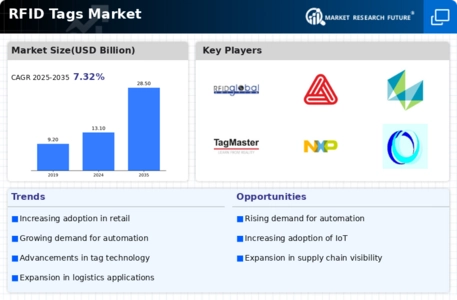
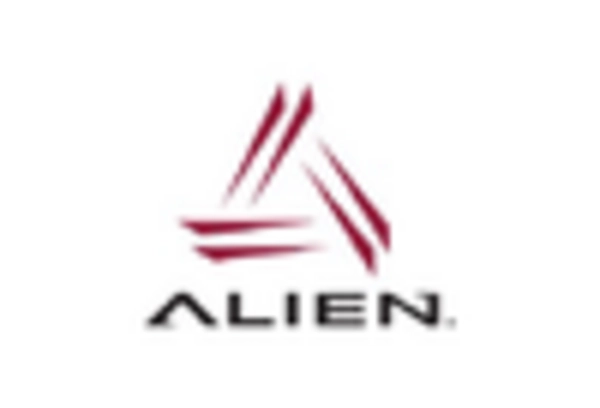
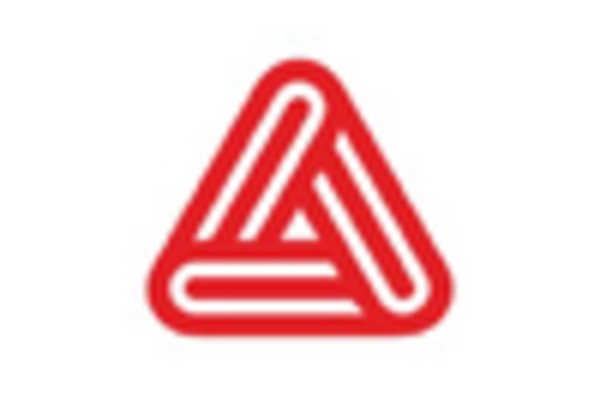
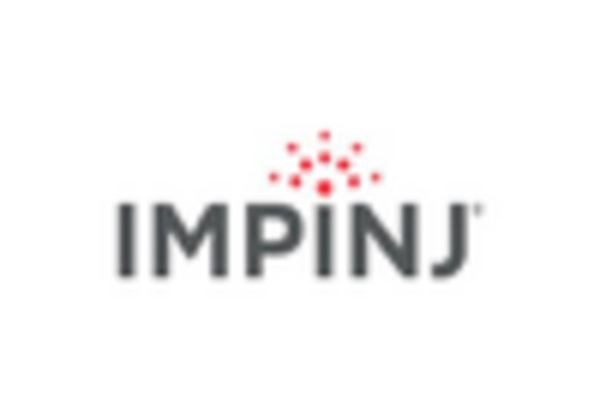
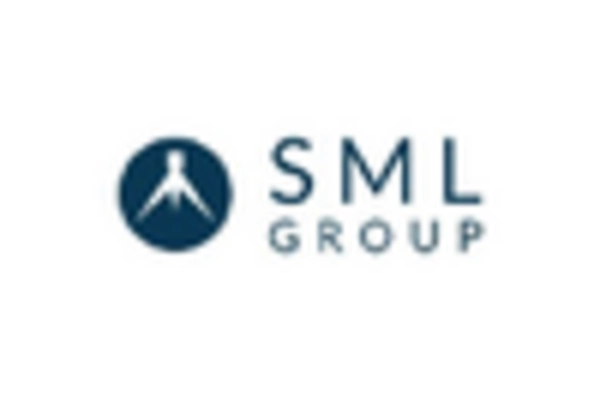
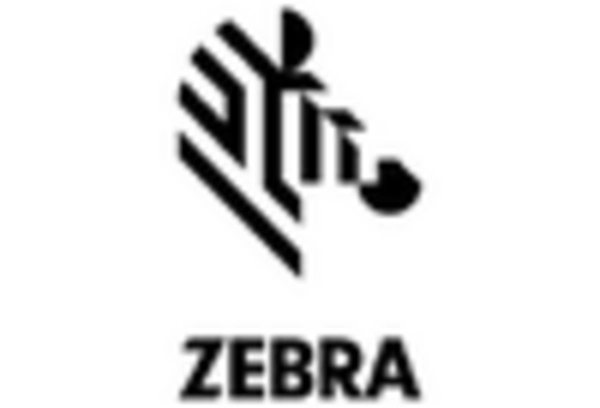









Leave a Comment